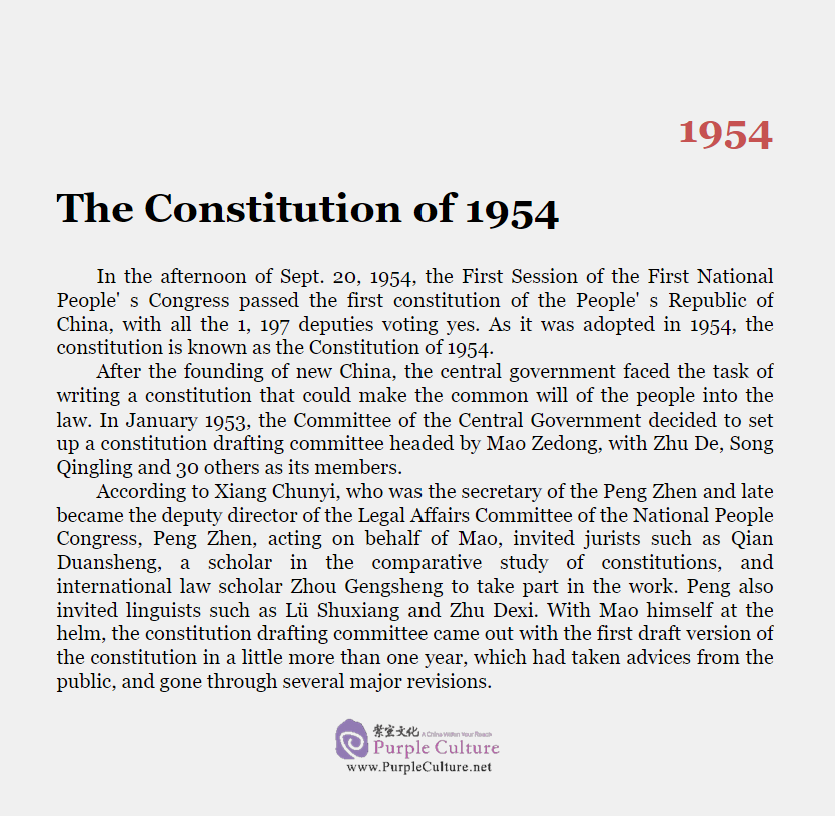National Memory: Remarkable Moments in the History of the People's Republic of China
From 1949, when the People's Republic of China was founded, to 2018, the book selects a major event in China every year in the 69 years. These events include political events, such as the founding ceremony, the third plenary session of the eleventh central committee of the communist party of China (CPC) and the 70th anniversary of the anti-fascist victory. Together, these memorabilia are the historical context of the prosperity and development of the whole new China.
Cover Stories of China Pictorial
From the covers of people's pictorial since its inception, nearly a hundred of them are selected, and the stories behind the covers and related pictures are elaborately compiled, which are composed of the birth records of people's pictorial, the cover interpretation, the national imprints and the romantic figures, to sort out, show and look back at the real people and vivid events in the history of new China. By connecting the cover of people's pictorial and the stories behind it, readers can feel the pulse of The Times. This book is not only a memory of new China, but also a feast of visual sharing.
Birth of China Pictorial
In October 1949, soon after the founding of the People’s Republic of China (PRC), the Publicity Department of the Central Committee of the Communist Party of China (CPC) decided to launch a national illustrated magazine. Hu Qiaomu, then deputy minister of the Publicity Department and director of the State General Administration of Press and Publication, was entrusted to head the task. Preparations to launch the magazine began in November 1949 and continued until May 1950 when the editorial department of China Pictorial was officially established.
In June 1950, the editorial department came up with an idea of inviting Chairman Mao Zedong to inscribe a masthead for China Pictorial and asked Hu to deliver the request to Chairman Mao. Chairman Mao wrote six versions of the Chinese characters “China Pictorial” on two pieces of paper and marked the one he liked best with two small circles. That calligraphy has since been the official masthead of the magazine.
In July 1950, the inaugural issue of China Pictorial was published, with its cover featuring Chairman Mao at the founding ceremony of the PRC and a title page bearing the foreword to the magazine. A total of 40,000 copies of the inaugural issue were printed.
From the very beginning, the magazine showed extraordinary momentum: With 48 pages in oversized octavo format, it featured beautiful color photos and exquisite full-color printing that were rare at the time. The magazine was even directly delivered to Chinese top leaders and departments of the State Council throughout the year. After 1951, English, Russian, French, Japanese, Spanish, German, Hindi and Arabic editions of China Pictorial were launched one-by-one. In its heyday, it was published in as many as 26 languages and circulated in more than 100 countries and regions. Not only has it showcased modern China’s development and changes to the outside world, but also witnessed the evolution of the country’s politics, economy, culture, and lifestyle.
Over the past six decades, only four Chinese magazines and newspapers, including China Pictorial and People’s Daily, has published continuously despite any political turmoil. More commendably, though undergoing many ups and downs, China Pictorial has never abandoned its instinctive pursuit to capture beauty and purity in an illustrated magazine.
A Window to the Nation –
The Cover Stories of China Pictorial
Of nearly 10,000 magazines published in the country, China Pictorial is the only considered the “national illustrated magazine” and tasked with the mission to introduce China to the outside world. The covers of the magazine have recorded milestone events throughout the history of the PRC and they illustrate trends of social development.
Throughout the history of the PRC, China Pictorial has never stopped covering the social development of the nation. The focus of the magazine has changed alongside the passage of time. Such changes are reflected in its covers. By analyzing the contents, composition, and subjects of its cover photos we can more easily identify specific transformative historical periods.
1. 1950-1965: Construction of New China
During this period, China made remarkable achievements in industrial and agricultural development, so photos depicting construction scenes and bumper harvests as well as hardworking workers and farmers were frequently featured on China Pictorial’s front covers, evidencing the rapid development of the newly-born PRC and immediate improvement in people’s livelihoods. A number of vivid photos depicting people from all walks of life, including miners, spinners, farmers, students, and heroic soldiers, graced the magazine’s covers. From 1950 to 1965, 23 covers depicted workers, 18 depicted farmers, 28 children, 23 performers, 10 ethnic minority groups, and six depicted soldiers.
However, most cover photos heavily highlighted figures while the backgrounds were dull and inert, lacking the capacity to convey more information. The things in backgrounds, such as piles of cotton and rice behind farmers and mines and machines behind workers, are only used as identifiers. Though vividly depicted, most of the subjects only represented the social groups to which they belonged, with the exception of a handful of celebrated figures, such as table tennis player Rong Guotuan on the 11th issue of 1959; Xing Yanzi, head of the Yangzi Squad, on the 20th issue of 1960, and Actress Yang Likun on the first issue of 1964. Covers of the May 1950 and December 1955 issues both depict farmers holding bundles of harvested rice. Today’s readers would want to know where the farmers came from, as well as their names and backstories. Back when they were taken, the two photos were meant to demonstrate China’s achievements in land reform and agricultural development. They were used to convey the ideological ideals of the time. In the period, cover photos usually did not emphasize individuality of the figures they depicted, but focused on the collective meaning of the social groups they represented.
(China Pictorial president and editor-in-chief from September 2007 to February 2012)

